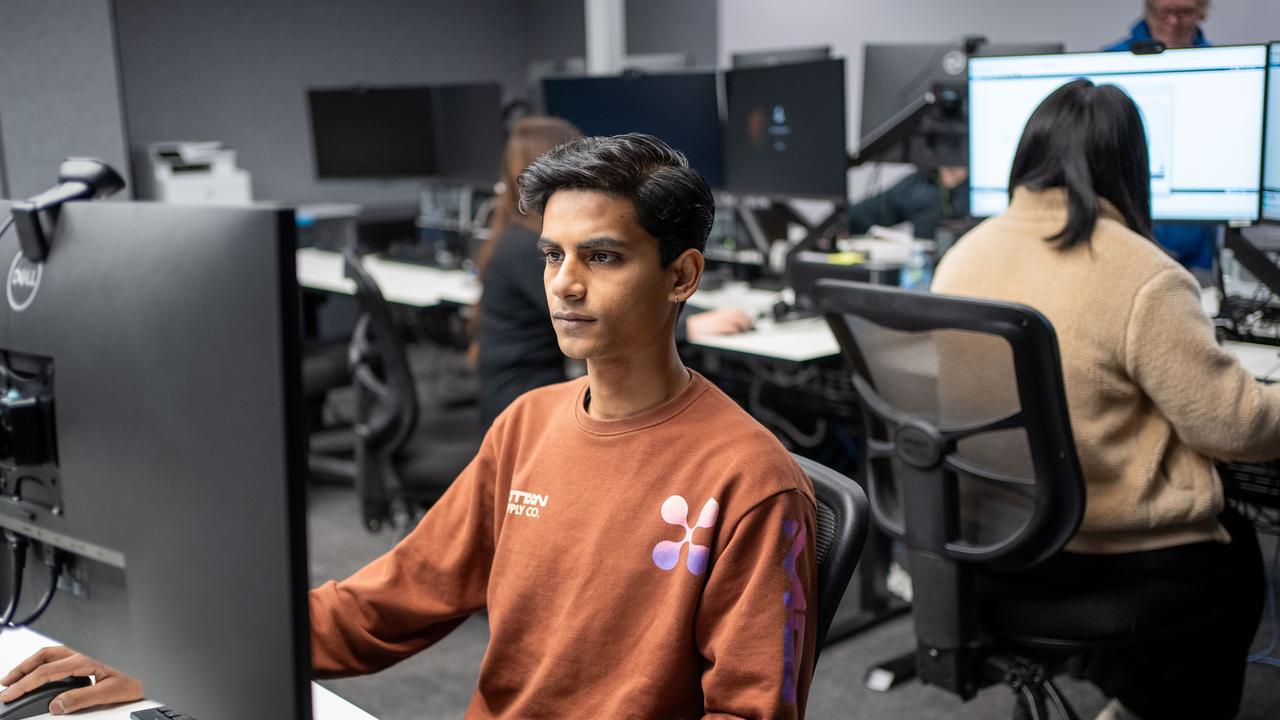Unis get benefits of digital world
Today’s cohorts of students are digital natives and have high expectations of the technological solutions universities provide them with. TechnologyOne has the answer to match student needs.

Australian universities are digitising to provide a better student experience as they come under financial pressure and seek new revenue sources, says Chandan Potukuchi, chief technology officer at TechnologyOne.
As government funding is reduced and caps are placed on international students, universities are looking to devolve through more short courses and microcredentials.
They are also working on student retention, and technology has a major role to play in providing a better student experience, Potukuchi says. TechnologyOne builds software-as-a-service enterprise resource planning systems, including one designed specifically for use in universities.
Today’s cohorts of students are digital natives and have high expectations of the technological solutions universities provide them with.
“They want a contemporary solution. They want a rich digital experience. They want to drive everything from the mobile phone and so universities are now tasked with: how do we make that information much more available to students?” Potukuchi says.
“They live in this sort of digital world where information is consumed at bite-sized pieces and instantaneous.”
Students want a system that will draw together administration, where they can see and alter their enrolment and courses; a learning management system with their course materials and assignments; and a library system.
And they also want technology that helps them in their day-to-day activities on campus.
“How do I navigate across the campus? How do I find food? How do I find social clubs and other activities I want to be engaged with. How do I connect to different communication streams on the university? How do I raise the safety concern, or how do I find parking?” Potukuchi says. “There’s this horizontal layer that maps out a typical day in the life of a student that has to be much more streamlined in terms of how the pieces are stitched together for the student to use.”
A unified enterprise resource system, such as TechnologyOne’s OneEducation solution, brings together all the data relevant to a student in the one place, to the benefit of the student and the university.
Students can personalise their digital experience, opting in and out of communications and selecting the things they want to be informed about and how often.
The system also becomes a powerful student retention tool, which is increasingly important given the high cost of attracting students. Once a student is attracted to an institution, they need to be enrolled seamlessly and seamlessly progressed into the admissions process, which should require them to enter their information only once and then cascade the information to downstream functions or systems.
“The university tries to make that process really streamlined, and the student provides enough information for the university to know if there’s any problems and identify them early on,” Potukuchi says.
The TechnologyOne solution can also alert the university to students who are at risk of dropping out, particularly at critical periods, such as the first month that a student is in their course, or around exam and assessment periods.
“We’re making the systems highly engaging and value adding for the student experience, because there’s a one-month period where students are asking is this the right course for me? Is this the right study program for me? Am I feeling comfortable with this shift to the university world?” Potukuchi says.
Additionally, if a student hasn’t passed or completed some of their academic tasks, that could be another early warning sign that they are at risk of leaving the university and gives the institution a chance to intervene.
“That might just mean that quick phone call just to check in and say, ‘Hey, how are you travelling? Is there anything we can do to help? Sometimes students have picked the wrong course, and the university has an opportunity to realign the expectations of the student,” Potukuchi says.
Central to this is access to rich, timely data, to allow the institution to act quickly.
“Disparate systems can take weeks to bring that information together to pinpoint a net risk student. A single, integrated ERP systems means that you have that information awareness much, much earlier in that cycle,” Potukuchi says. “If you find it in the first few days or weeks there is far more time to provide interventional strategies.”
Another avenue for improved student experiences is in timetabling and curriculum management. Students can provide information such as days when they work or have other external commitments, and these can be accounted for when the student’s individual timetable is constructed. Many also want to finish their studies as soon as possible and their course structure can be optimised to help them do this and to reduce the time they need to spend on campus.
The system can also be configured to ensure that students’ afternoon classes aren’t scheduled in a location too far from the nearest bus stop or parking location.
What was also evident recently is that Australian universities are in a strong position when it comes to updating their technology, as was demonstrated by the sector’s ability to quickly switch to all online learning during the Covid pandemic.
“The Australian higher education sector has been a little bit more agile, a little bit more early adopter during technical disruption,” Potukuchi says.
The move to using software-as-a-service is just the latest in a series of technological adoptions by universities, from recording and digitising lectures around 2010, moving course materials online thanks to the iPad, and adopting cloud technology. Many universities are also considering what artificial intelligence will mean for them.
Most universities in Australia spend between 7 per cent and 12 per cent of annual revenue on IT-related investment.
As they digitise, many will shift to SaaS applications and pay for only what they use, with the ability to scale up usage and performance at peak times, such as the enrolment period.
“SaaS is designed to auto scale, so you only pay for the infrastructure you’re actually using,” Potukuchi says. “During peak periods the system can scale up automatically to accommodate things like high admissions or exam results.”


